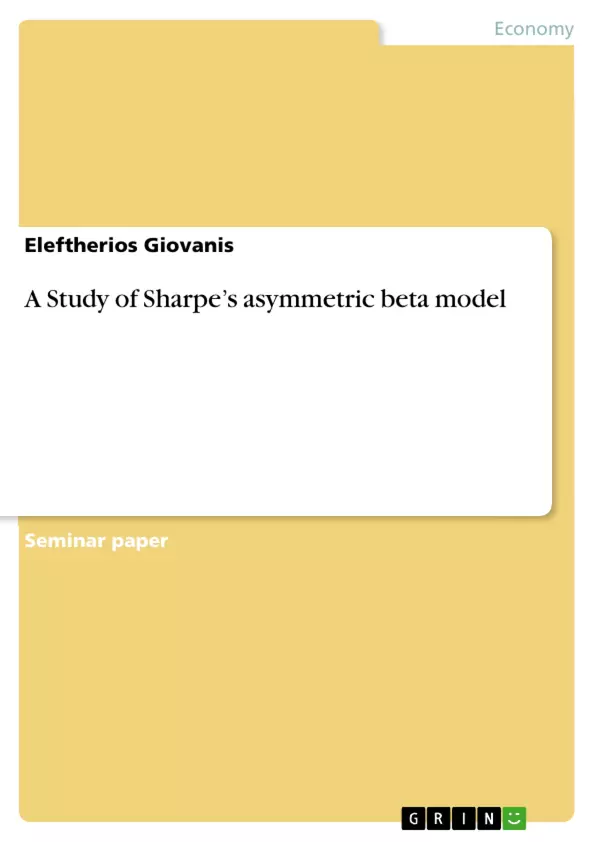This paper presents the classic-static beta values and beta values estimated by an asymmetric beta model. In asymmetric model we have the possibility to estimate the upside and downside betas, while in the static model we are not able to work it out. We will estimate the static and asymmetric betas of two stocks in France Exchange stock market, Michelin and Tf1. So the data consists of daily returns of France Exchange stock market index CAC-40 and the above two stocks , during the period June 2nd of 2000 to May 17th of 2004. Actually this paper examines the estimation of betas under bull and bear market conditions. Asymmetries are of substantial economic importance for an investor who has symmetric beliefs, so he must switch his beliefs in an asymmetry one, where this is necessary.
Inhaltsverzeichnis (Table of Contents)
- Abstract
- Introduction
- Summary statistics
- Data
- Methodology
- Results
- Conclusions
- References
- Appendix A
- Appendix B
Zielsetzung und Themenschwerpunkte (Objectives and Key Themes)
This paper aims to compare the classic-static beta model with an asymmetric beta model, analyzing the estimation of betas under bull and bear market conditions. The study focuses on two French stocks, Michelin and TF1, using daily returns data from the CAC-40 index.
- Asymmetric beta model and its implications for investors
- Comparison of static and asymmetric betas in estimating stock risk
- Analysis of market conditions and their impact on beta values
- Assessment of the reliability of the classic-static beta model
- Investigating the characteristics of stock returns, including skewness and kurtosis
Zusammenfassung der Kapitel (Chapter Summaries)
- Abstract: Introduces the concept of asymmetric beta model and its ability to estimate upside and downside betas. This paper examines the application of the model to Michelin and TF1 stocks on the French Exchange stock market.
- Introduction: Discusses the limitations of the classic-static beta model and its unrealistic assumption of consistent risk behavior. Highlights the importance of asymmetric beta model in capturing market condition-dependent risk measures. Reviews previous research on asymmetric betas, outlining studies by Bilbao et al. (2007), Bai and Perron (2003), Levy (1974), Fabozzi and Francis (1977), Clinebell et al. (1993), Woodward and Anderson (2003), Bhardwaj and Brooks (1993), Roy (1952), Campbell et al. (2001), Duffee (1995), Ang and Chen (2001), and Ekholm and Wilhelmsson (2004). Provides a brief overview of the companies Michelin and TF1.
- Summary statistics: Presents summary statistics for the two stocks, Michelin and TF1. Examines the stationarity of stock levels and returns through graphical representations. Analyzes skewness and kurtosis of stock returns, confirming the presence of leptokurtosis. Concludes that the data do not follow a normal distribution.
Schlüsselwörter (Keywords)
This study explores the key concepts of asymmetric beta, classic-static beta, stock risk, market conditions, bull and bear markets, stock returns, skewness, kurtosis, and leptokurtosis.
- Citation du texte
- Eleftherios Giovanis (Auteur), 2008, A Study of Sharpe’s asymmetric beta model, Munich, GRIN Verlag, https://www.grin.com/document/146638



